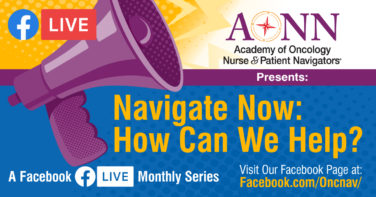Hulu boasts a 96% view rate for advertising content on their platform. Your media buying partner will insist real consumer brand awareness requires a big, broadly targeted, big broadcast television buy with a :30 or :60 spot. And your daughter in college will laugh at you if you don’t have a Snapchat or Instagram story.
The truth is, they are all right, and it’s more complicated than it used to be to market directly to consumers, especially for pharmaceutical advertisers.
Today, running a good DTC campaign requires gazillions of “commercial-like” assets for gazillions of channels, properties, and mediums. The days of stressing over simply cutting a 30-second spot from a longer spot and pulling a frame for the print ad are long gone. Now, the process is much more complex, and brands need to plan for how their creative will exist as a broadcast TV commercial, dynamic in-feed content, a :06 pre-roll, even shorter vertically formatted “story” content—and many more options.
Marketers need to adapt their creative campaigns for the many media channels consumers’ view with audio off while also preparing short (30-second) audio-only spots for the variety of streaming audio platforms for consumers that have exploded in terms of listenership over the last year. Couple this with the need to include fair balance and safety information, and it’s quite a lift.
Broadcast Television Advertising Still Works, But…
Connected television platforms such as Hulu, YouTube TV, and Netflix are dominating internet usage. Your teenage daughter is right—social media is a leading source of information for nearly all demographics. But most pharmaceutical brands are not dealing with teenage populations—instead we target Gen X, Baby Boomers, and older.
While the social media and connected television platforms are crucial, traditional broadcast television still works for generating awareness. News programs, special events, and sports broadcasts still receive heavy viewership on “traditional” television. Nearly every DTC brand I have worked on in recent years that was looking to generate increased brand awareness required “traditional television” advertising, and the ROI models we ran supported that.
However, the connected and social platforms were crucial supplements. Jenny Streets, Head of Industry, Health at Facebook, has been advising and pointing this out in nearly all of her speaking engagements. Today’s consumer advertising requires at least three more touchpoints to connect than it did 10 years ago, and social media is a crucial part of that mix. Facebook indicates that consumers recognize a “brand’s creative” within one second of viewing it on their platform if the creative is part of a holistic DTC campaign. That’s the key. The approach to DTC must have connected television and extensive social as part of their mix. The challenge is doing this in pharma.
Awareness is Key in Social Media
Knowing that messaging in many social platforms will need to be quick and simple, conveying its entire idea within seconds, we need to concentrate on general brand awareness. Consider gaining name and condition recognition as part of a paid social media campaign. Capitalize on the platform by having creative play with motion and animation within the ad. Some amazing and creative ways exist for brands to play with Facebook and Instagram stories or in-feed ads to entice a user to pause or hold on a story.
While users often have “audio-off,” consider attractive ways to encourage audio on to create “user delight.” Since engagement is usually better in social versus other digital display media, engagement can lead to more informational content. Alternately, a brand can rely on search, retargeting, and CRM to move users toward the “consideration” stage of a customer journey.
Ultimately, Brands Need to be Sincere
The strategy for a DTC approach for messaging within streaming platforms such as Hulu and others is unique. Be sincere. Consumers can smell the sell. But ultimately, reaching consumers on streaming platforms has tremendous advantages. The ads often cannot be skipped, plus your ad can garner heavy viewership, solid targeting algorithms, and a grand appearance within a potentially large “TV show.”
However, your message will most likely need to be “short” (forget about the 60-second spot). This may pose challenges for fair balance and safety information. If that’s the case, consider unbranded communication, which can very effectively educate your patient about the condition the brand is for. If you have a good content, search, and patient-relationship strategy, the “treatment option” message can be handled by that.
Streaming audio platforms such as Pandora and iHeartRadio are also great options to run a disease awareness information campaign, with an incentive for the user to learn more by clicking on an image on their phone or media hub. And Pandora is still a very viable music streaming platform that can also be used in this fashion, as their health vertical offers tremendous capabilities for targeting health and wellness subscriber interests.








